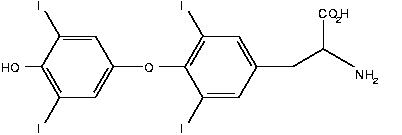* Eradicating world hunger is a slow struggle. According to New Scientist, the Food and Agriculture Organization (FAO) of the United Nations predicts that 440 million persons will be chronically hungry in the year 2030, down from 776 million now. This prediction revises the goal of the 1996 World Food Summit, which was to reduce the number of undernourished persons by one half by 2015; at the current rate, however, the number will fall only 11 percent by that year.
* Birth size, particularly length and head circumference, is associated with higher rates of breast cancer in premenopausal women. Study results published in BMJ showed that women who weighed more than 4,000 g (8 lb, 13 oz) at birth had a 3.5-fold higher rate of breast cancer than women of similar gestational age who weighed less than 3,000 g (6 lb, 10 oz) at birth. The lives of 5,358 women born between 1919 and 1925 were tracked from birth until the 1960 census. The study found no association between birth characteristics and breast cancer rates in postmenopausal women.
* The death of a child often shortens the life of the mother, according to a follow-up Danish study published in The Lancet. Researchers compared mortality rates over 16 years in 21,062 parents with a child who died before the age of 18 years and 293,745 parents who had not lost a child. Overall mortality was increased in the bereaved mothers, who were more likely to die of unnatural and natural causes than mothers who had not lost a child. Researchers found an increase in deaths from unnatural causes during the first three years of bereavement. The risk was particularly acute in the women whose children had died unexpectedly or from something other than illness. The study found that fathers also had an increased risk of death from unnatural causes in the first three years after losing a child.
* Patients who are prescribed liothyronine sodium for the treatment of depression should be monitored for signs of thyrotoxicosis, according to a case study published in Southern Medical Journal. During a routine gynecology appointment, a 49-year-old woman complained of fatigue, lethargy, weight gain, and occasional palpitations. Test results were consistent with central hypothyroidism, and she was referred to an endocrine clinic. A week before the clinic visit, the patient's triiodothyronine levels were found to be elevated. On evaluation at the clinic, it was discovered that she had been taking liothyronine sodium for seven months as an adjunct to fluoxetine prescribed by a psychiatrist.
* A beard--or the lack of one--may say a lot about a man's health. According to a study of 2,438 men (ages 45 to 59) that was published in the American Journal of Epidemiology, men who shave infrequently have a greater risk of all-cause and cardiovascular disease mortality and stroke events than men who shave every day. The researchers found that infrequent shavers are more likely to smoke than other men and are likely to share other characteristics that affect mortality and disease risk, such as having angina, being unmarried, and working in manual occupations. Smoking and social factors did not explain the increased risk of stroke in infrequent shavers, but hormone levels may be a factor.
* Keep your hands clean and your time free. As reported in AAP News, the U.S. Centers for Disease Control and Prevention (CDC) has suggested that physicians use 60 to 90 percent alcohol solutions to clean their hands if they are not visibly soiled. Compared with soap-and-water handwashing, using alcohol-based gels can save as much as an hour a day for physicians who normally follow CDC recommendations to wash soiled hands with soap and water for 15 seconds.
COPYRIGHT 2003 American Academy of Family Physicians
COPYRIGHT 2003 Gale Group


